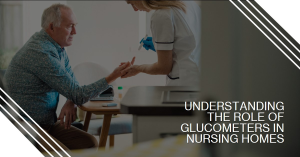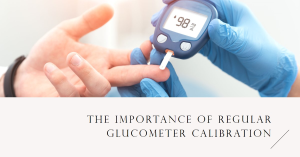
Nursing homes play a vital role in providing quality care to elderly residents, including those who require regular monitoring of their blood glucose levels. Accurate measurement of blood sugar levels is crucial for managing diabetes and ensuring the well-being of individuals in these care facilities. One essential aspect of maintaining the accuracy of blood glucose measurements is the calibration of glucometers, the devices used for testing blood sugar levels. In this comprehensive guide, we will discuss the importance of glucometer calibration in nursing homes and provide insights into how frequently this calibration should occur.
Understanding the Role of Glucometers in Nursing Homes

Glucometers are handheld devices commonly used in healthcare settings, including nursing homes, to measure blood glucose levels. These devices are invaluable for individuals with diabetes, as they allow for frequent monitoring of blood sugar levels, aiding in effective diabetes management. Nursing home staff members often rely on glucometers to ensure residents’ blood glucose levels are within a safe range, preventing complications associated with both hypo and hyperglycemia.
The Importance of Regular Glucometer Calibration

Accurate blood glucose measurements are vital for maintaining the health and well-being of nursing home residents with diabetes. Glucometers, like any other medical device, require periodic calibration to ensure precise and reliable results. Calibration is the process of adjusting the glucometer to match a known standard, thus maintaining accuracy in blood glucose readings.
Factors Influencing Glucometer Calibration Frequency
Several factors can influence the recommended frequency of glucometer calibration in nursing homes. These factors include:
- Manufacturer Guidelines: Glucometer manufacturers typically provide guidelines on calibration frequency. It is crucial to follow these recommendations to maintain the accuracy of readings. The manufacturer’s guidelines take into account the specific model of the glucometer and its intended use.
- Regulatory Requirements: Nursing homes must comply with relevant regulatory requirements, which may include guidelines on glucometer calibration. These regulations aim to ensure patient safety and accurate medical monitoring.
- Frequency of Use: The frequency at which a glucometer is used in a nursing home can also impact the calibration schedule. Devices used more frequently may require more frequent calibration to maintain accuracy.
- Accuracy Checks: Periodic accuracy checks can help identify any discrepancies in blood glucose measurements. If an accuracy check reveals inconsistent results, immediate recalibration may be necessary.
- Environmental Conditions: Extreme temperatures or high humidity levels can affect the performance of glucometers. In such cases, more frequent calibration may be necessary to compensate for these conditions.
Recommended Calibration Frequency for Nursing Homes
While the specific calibration frequency may vary based on the factors mentioned above, a general guideline for nursing homes is to calibrate glucometers at least once every six months. However, it is essential to consult the manufacturer’s recommendations and any applicable regulatory requirements to determine the appropriate calibration frequency for a particular glucometer model.
In addition to the biannual calibration, nursing homes should also conduct regular accuracy checks to ensure the ongoing precision of blood glucose measurements. Accuracy checks can be performed by comparing the readings of a particular glucometer with a laboratory-based reference method or a known control solution.
Ensuring Accurate Blood Glucose Monitoring in Nursing Homes
In nursing homes, accurate blood glucose monitoring is crucial for providing optimal care to residents with diabetes. Along with following the recommended calibration frequency, there are additional steps nursing homes can take to ensure precise readings:
- Proper Training: Staff members responsible for using glucometers should receive comprehensive training on their operation, maintenance, and calibration procedures. This training should also include guidance on correctly interpreting blood glucose readings.
- Quality Control Measures: Implementing robust quality control measures can help identify and rectify any issues with glucometer performance. This may involve regularly reviewing and documenting accuracy checks, promptly addressing any calibration concerns, and ensuring an adequate supply of control solutions.
- Maintenance and Upkeep: Regular maintenance and upkeep of glucometers are essential to their longevity and accuracy. This includes cleaning the devices as per manufacturer recommendations and promptly addressing any technical issues.
Conclusion
In conclusion, nursing homes must prioritize the calibration of glucometers to ensure accurate blood glucose monitoring for residents with diabetes. While a general guideline suggests recalibrating at least once every six months, it is important to consider manufacturer guidelines, regulatory requirements, frequency of use, accuracy checks, and environmental conditions. By adhering to these recommendations and implementing proper training, quality control measures, and maintenance protocols, nursing homes can provide reliable and effective diabetes management, promoting the well-being of their residents.





